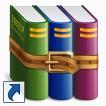0 items

- Description
FP 101 Week 8 Quiz
Complete the Week 8 Quiz provided by your facilitator.
Submit your Week 8 Quiz as a Microsoft® Word®attachment to the Assignment Files tab.
Week 8
- Homeowner’s insurance covers all of the following except
- Personal property
- Personal liability
- Additional living expenses
- Automobiles
- Which of the following is not correct about renter’s insurance?
- The broad form covers personal property against perils specified in the policy.
- Renter’s insurance covers the building and other structures on the site.
- Typical coverage pays only the actual cash value of one’s losses.
- Renter’s insurance includes personal property protection, additional living expenses, and personal liability.
- When purchasing homeowner’s insurance, if you want a policy that does not consider depreciation, you should look for a policy that
- Will cover the actual cash value of your house and possessions
- Will cover two times the actual cash value of your house and possessions
- Will cover the replacement value of your house and possessions
- Does not adjust your coverage based on inflation, since this could end up costing you more in annual premiums
- Which of the following best defines “actual cash value” in a home or renter’s insurance policy?
- Insurance that pays the replacement value of damaged or stolen
- Insurance that pays for additional living expense coverage
- Insurance that pays the depreciated value of damaged or stolen property
- Insurance that pays for the items included in a “rider”
- Motor vehicle coverage typically includes all of the following except
- Most legal expenses
- Bodily injury liability up to a specified level for all injured in an accident
- Medical payments up to the policy limit
- Bodily injury liability of all expenses, no matter the cost, for the most injured
- Tim was driving his friend Nick to football practice. While driving, he was hit by a driver who had coverage of 100/300/50. Tim and Nick each suffered some physical injuries. Based on this information, which of the following is correct?
- Tim’s injuries would be covered $100 and property damage would be limited to $300.
- Nick’s injuries would be covered to $50,000.
- The policy would provide a maximum of $100,000 for each of the injured, and no more than $300,000 for total injuries sustained in the accident.
- Tim and Nick’s injuries would be covered to $300,000 each.
- Patrick has an old beater car and wants to keep his insurance costs down. In order to minimize the financial impact of an accident he may cause, he should, at a minimum, carry which type of insurance?
- Property damage liability
- Collision
- Comprehensive physical damage
- All of these are required for all vehicles
- The set amount that you must pay toward medical expenses before he insurance company pays benefits is called
- Reimbursement
- Out-of-pocket limit
- Deductible
- Internal limit
- Georgia has a health insurance policy that includes a deductible of $600 and a coinsurance of 20%. If her total bill is $4,000, how much will she be required to pay?
- $400
- $600
- $1,280
- $3,400
- Cameron, age 25, sustained a debilitating injury and was unable to perform his job for 45 days. His employer had a disability income insurance policy that pays 70% of take-home pay with an elimination period of 60 days and coverage up to age 65. Given this information, which of the following is true for Cameron?
- He will receive disability income for 15 days.
- He will receive disability income for 45 days.
- He will receive disability income for 60 days.
- He will not be eligible for any disability income because his disability ended before the elimination period ended.
- What is a function of disability insurance?
- Covers medical costs incurred by an insured and their family
- Part B covers medical costs for you and passengers of your insured vehicle, if you are at fault.
- Provides income replacement to individuals who are unable to work as a result of illness or accident
- Covers against the risk that personal property will be stolen or damaged by others
- Most people buy life insurance to
- Pay off a mortgage
- Protect the people who depend on the insured from financial losses caused by his or her death
- Pay for a vacation
- Pay taxes
- Judy and James have a 4-year old child. They plan to purchase a life insurance using this formula: Current income X 7 X 70%. Which method are they using to determine their life insurance needs?
- Easy method
- Formal calculation method
- Nonworking spouse method
- Family needs method
- If you want to purchase tem insurance, you will receive all of the following except
- Protection against loss of life for a specified term
- Cash value
- Temporary insurance
- A benefit during the period it covers, such as 1,5,10, or 20 years
- Of the following, which one is the most positive feature of whole life insurance?
- You must pay interest on the policy
- You pay premiums each year for the rest of your life
- It builds cash value
- It is permanent life insurance